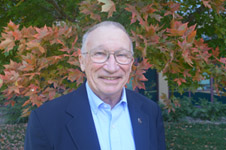Natural Resources, School of
Document Type
Article
Date of this Version
4-1999
Citation
Diffendal, R. F., Jr. 1999. Cheyenne County Test-Hole Logs: Nebraska Water Survey Test-Hole Report No. 17. University of Nebraska–Lincoln, Institute of Agriculture and Natural Resources, Conservation and Survey Division.
Abstract
In 1930, the Conservation and Survey Division (CSD) of the University of Nebraska and the United States Geological Survey began a program of cooperative groundwater studies in Nebraska. Since then test drilling by use of rotary drilling equipment has been an integral part of that program. This report contains logs of all the test-holes drilled in the county under the program as well as those drilled by the Conservation and Survey Division with financial assistance from other government agencies. Also included are logs of test-holes drilled by cooperators with the South Platte Natural Resources District.
The maps in this report show the location of all test holes drilled in the county since 1934.
Present techniques of test-hole logging and sampling include use of drilling mud suitable to drilling conditions, timing by stopwatch of the drilling of each 5-foot increment of depth, and removal of all cuttings from the test hole at intervals of 5 feet or less. During the drilling of the hole, cuttings from each interval are examined immediately; samples representing each 5-foot interval and each recognizable change in material are retained. After samples are washed, they are described lithologically and the color is evaluated by comparison with standard color charts. The samples then are dried, stored, and cataloged. All samples are processed and kept on open file in the offices of the Conservation and Survey Division, 113 Nebraska Hall, University of Nebraska-Lincoln, Lincoln, Nebraska 68588-0517.
Beginning in September 1951, some of the test holes have been logged electrically. Geophysical logs (e-logs) often can be used to determine formation boundaries more precisely than by field sampling, especially where differences in rock types from one formation to another occur at the boundary. Figure 2 is an example of geophysical logs of a test hole from Cheyenne County with formation boundaries shown. Departures of the curves from the center lines generally indicate that the geologic unit is becoming coarser grained. A notation on each test-hole log indicates if geophysical logs are part of the original test-hole data in the CSD office in Lincoln.
This publication is one of a series being issued to make more readily available the record of test holes drilled since 1930. The series of publications is made on a county basis and includes, with some exceptions, logs of all test holes drilled in each of the counties. The logs have not been reviewed for conformance with editorial standards and nomenclature. In the case of Cheyenne County, descriptions of strata done in earlier test-hole reports are included with some revised formation information in this report.



Comments
Published April 1999 by the Conservation and Survey Division, Institute of Agriculture and Natural Resources, University of Nebraska–Lincoln.
Note: “The logs of 10 test holes were inadvertently left out of the first edition of the Cheyenne County Test-Hole Logs (April 1999). They are included in this addendum along with an update of figure 1a and c.” The addendum to Cheyenne County Test-Hole Logs: Nebraska Water Survey Test-Hole Report No. 17 is included below as an additional file.